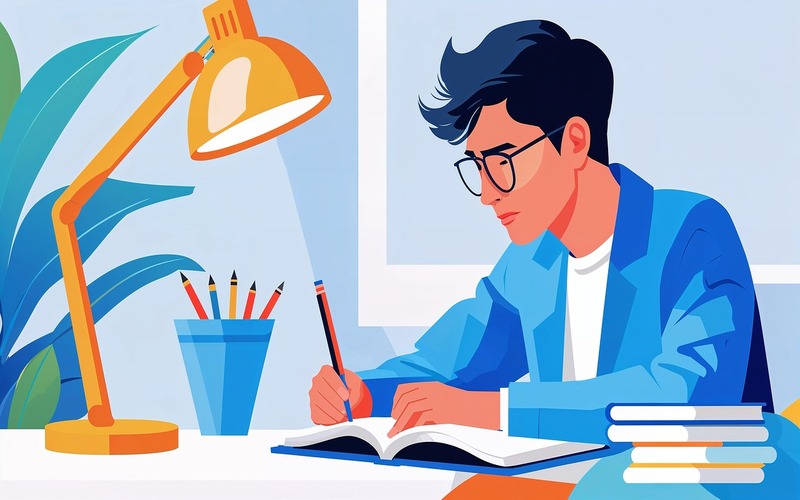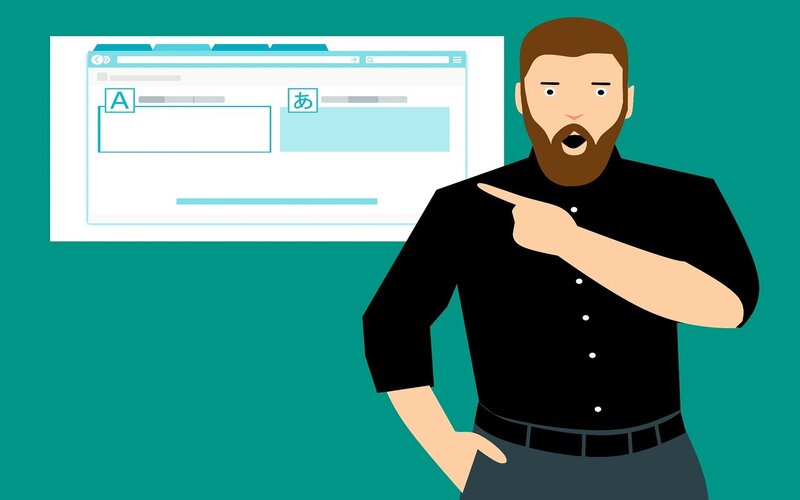
Voice-Over in Education: Audio for Better Learning
In the world of modern education, the use of technology has opened new doors to enrich the learning process. One innovation that is increasingly being used is voice-over in learning materials. This technology not only makes learning more lively, but also helps students understand the content better through supporting audio elements. Amid the need for wider and more inclusive access to education, education translation through voice-over is an important key in bridging the language and cultural gap.
What is Voice-Over in Education?
Voice-over is a sound production technique in which a narrator speaks off-screen to explain, read, or describe something in a video or presentation. In the context of education, voice-ver is used to convey information in learning videos, tutorials, educational animations, or online courses. The voice chosen is usually clear, expressive, and easy to understand in order to improve student understanding. In the process of education translation, voice-over plays an important role in adapting learning materials to various languages and cultures without losing the original meaning or context. For example, a math lesson video in English can be translated and dubbed into Indonesian so that local students can learn without language barriers.
Read More: Future Trends in Malaysian Web Novel Localization
Benefits of Voice-Over for Learning
Increase Information Absorption
Not all students have the same learning style. Some are more responsive to audio than visuals or text. With voice-over, learning content can be accessed through hearing, which is very helpful for students with reading difficulties or visual impairments.
Facilitate Foreign Language Understanding
Many global education platforms provide materials in English. Through voice-over and education translation, these materials can be adapted to local languages, expanding reach and increasing inclusivity.
Support Independent Learning
Voice-over allows students to learn independently anytime and anywhere. With clear and structured narration, students can repeat parts that they have difficulty understanding without having to rely entirely on the teacher.
Helping Inclusive Education
For students with special needs, especially those with dyslexia or language processing disorders, audio-based materials are very useful. It is a more friendly and adaptive form of delivery.
The Role of Education Translation in Educational Voice-Overs
One of the major challenges in the global education world is the language barrier. Not all students are fluent in international languages such as English. This is where the role of education translation becomes very important. Through this process, educational content is translated and culturally adapted to remain relevant and easy to understand. However, education translation is not just about translating word for word. In the context of voice-overs, special attention needs to be paid to:
- Tone and intonation of voice: to remain true to the original meaning.
- Cultural context adjustment: Idioms, proverbs, or examples that are specific to the culture of origin need to be adjusted.
- Technical terminology: The translator must understand the specific field of education to avoid misinterpretation. Thus, a good voice-over in education translation is the result of collaboration between professional translators, voice-over narrators, and education experts.
Choosing the Right Voice-Over Artist
- Target Audience: Identify the demographics of your learners. Choose a voice actor whose tone and accent resonate with that audience.
- Project Type: Match the voice style to the type of content. Different projects, such as corporate training or children’s education, require different approaches.
- Voice Style: Evaluate vocal qualities such as warmth, clarity, and enthusiasm. A relatable delivery fosters a better connection with learners.
- Language Proficiency: Make sure the voice artist has a strong command of the language used in your course material. This includes pronunciation and fluency.
- Experience Level: Review portfolios or samples from potential voice actors to gauge their experience in similar projects. Experienced professionals often deliver higher-quality work.
- Actively listen: Watch multiple samples from each voice artist. Focus on how well they convey emotion and maintain energy throughout.
- Shortlist candidates: Create a shortlist of preferred candidates based on initial impressions and relevant experience before making a final decision.
- Conduct auditions: Request specific recordings or auditions based on your script. This allows you to see how well they interpret specific content.
- Check reviews: Look for testimonials or feedback from previous clients about their experiences working with a particular voice talent.
- Discuss expectations: Communicate clearly about the goals of the project, deadlines, and any specific requirements you have for the recording process. Selecting the right voiceover artist strengthens your e-learning module by ensuring clear communication while also increasing learner engagement through effective audio delivery.
Voice-Over Creation Process in Educational Materials
Script Writing
The script must be created or translated first. In the context of educational translation, it is important to ensure that the script has been adapted to the target language and maintains the original message.
Narrator Selection
The voice-over narrator is selected based on accent, speaking style, and clarity of voice. In the world of education, a neutral and easy-to-understand voice is preferred.
Audio Recording
The recording is done in a studio with adequate equipment to produce clear sound. Adjustments are made to ensure synchronization with the visuals (if any).
Editing and Integration
The recorded audio is edited and integrated into the video or learning media. This process also includes synchronization, trimming, and volume adjustments so as not to distract students' focus.
Case Study: Voice-Over in Global Online Courses
One successful example of the use of voice-over in education translation is online course platforms such as Coursera and Khan Academy. They provide courses from renowned universities, which are then translated into various languages, including Indonesian, through voice-over. By using the voice of a local narrator, students from various parts of the world can access lessons from Stanford, MIT, and other universities without feeling alienated by the language.
Challenges in Education Voice-Over
- Translation Quality
- Poor translation can cause confusion and misunderstandings. Therefore, it is necessary to use professional personnel in educational translation.
- Production Costs
- The process of quality voice-over requires costs, especially if it involves a studio, professional narrators, and audio-visual editors.
- Time Synchronization
- Synchronizing audio with visual movements takes extra time and precision, especially if the translated script is longer or shorter than the original version.
The Future of Voice-Over in Education

With the rapid growth of digital education and e-learning, the role of voice-over is predicted to become increasingly crucial. Moreover, artificial intelligence (AI) and text-to-speech (TTS) technologies have begun to be used to generate high-quality automated narration voices. However, for more personal and emotionally impactful education, the human voice is still the main choice. It is important to remember that voice-over is not just a tool, but also a means to bridge the global education gap. With accurate and culturally relevant education translation, voice-over can make education more equitable, just, and inclusive.
Voice-over in education is an important innovation that can enhance the learning experience, especially when combined with education translation. This technology not only makes content more accessible to a wide range of audiences but also helps students from different backgrounds gain equal understanding. In the future, with the support of technology and interprofessional collaboration, voice-over will become an integral part of inclusive and sustainable global education.
If you want to deliver learning materials that are more effective, inclusive, and reach a cross-language audience, it's time to take advantage of Digital Trans Asia’s voice-over and education translation services. With a team of experienced translators and professional narrators, we are ready to help you transform educational content into something that is more understandable and relevant to a wide range of audiences. Whether for online courses, video tutorials, or educational presentations, we ensure that every message is delivered clearly and precisely in the appropriate language. Trust your educational audio needs to Digital Trans Asia and improve the quality of your learning today.
Ready to improve your educational content with expert voice-over services? Visit https://digital-trans.asia/ to learn more about our services. Contact us today to get started!